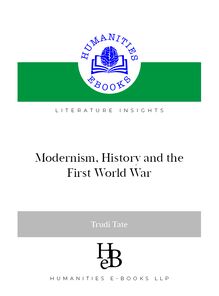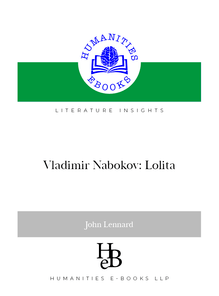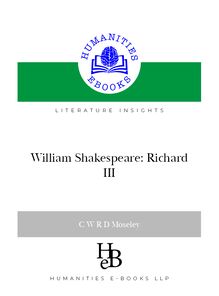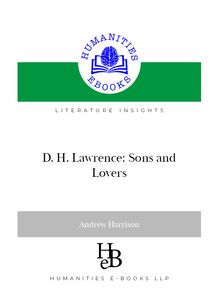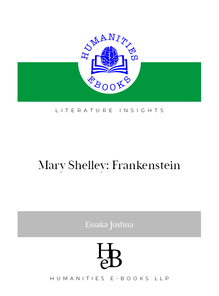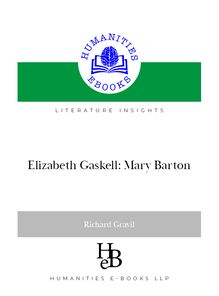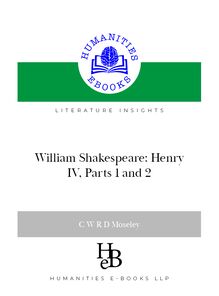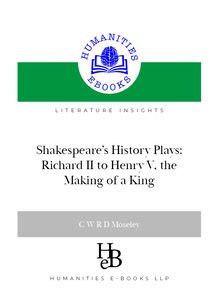-
 Univers
Univers
-
 Ebooks
Ebooks
-
 Livres audio
Livres audio
-
 Presse
Presse
-
 Podcasts
Podcasts
-
 BD
BD
-
 Documents
Documents
-
- Cours
- Révisions
- Ressources pédagogiques
- Sciences de l’éducation
- Manuels scolaires
- Langues
- Travaux de classe
- Annales de BEP
- Etudes supérieures
- Maternelle et primaire
- Fiches de lecture
- Orientation scolaire
- Méthodologie
- Corrigés de devoir
- Annales d’examens et concours
- Annales du bac
- Annales du brevet
- Rapports de stage
La lecture à portée de main
83 pages
English
Découvre YouScribe en t'inscrivant gratuitement
Je m'inscrisDécouvre YouScribe en t'inscrivant gratuitement
Je m'inscris
Obtenez un accès à la bibliothèque pour le consulter en ligne
En savoir plus
En savoir plus
83 pages
English
Obtenez un accès à la bibliothèque pour le consulter en ligne
En savoir plus
En savoir plus

Description
Treats Troilus and Cressida as a masterpiece in tune with 20th Century attitudes to love and war, and with literary and dramatic forms which developed through the last century.
Sujets
Informations
| Publié par | Humanities eBooks |
| Date de parution | 11 janvier 2021 |
| Nombre de lectures | 0 |
| EAN13 | 9781847600615 |
| Langue | English |
Informations légales : prix de location à la page 0,0200€. Cette information est donnée uniquement à titre indicatif conformément à la législation en vigueur.
Extrait
Literature Insights General Editor: Charles Moseley
Running Head 1
A Guide to Shakespeare Troilus and Cressida
Terry Hodgson
“The most modern of Shakespeare’s Plays” http//www.humanities-ebooks.co.uk
William Shakespeare: Troilus and Cressida
Terry Hodgson
Tirril: Humanities-Ebooks, 2008
publicationdata
© tERRy HODGSON, 2008
The Author has asserted his right to be identiIed as the author of this Work in ac-cordance with the Copyright, Designs and Patents Act 1988.
Published by Humanities-Ebooks LLPTirril Hall, Tirril, Penrith CA10 2JE
readingoptions
*To use the navigation tools, the search facility, and other features of the tool-bar, this Ebook should be read in default view. *To navigate through the contents use the hyperlinked ‘Bookmarks’ at the left of the screen. *To search, expand the search column at the right of the screen or click on the binocular symbol in the toolbar. *For ease of reading, use <CTRL+L> to enlarge the page to full screen *Use <Esc> to return to the full menu. *Hyperlinks appear in Blue Underlined Text. To return from an internal hyper-link use the ‘previous view’ button (more than once if need be). *For a computer generated reading use <View>Read out loud>
licenceandpermissions
Purchasing this book licenses you to read this work on-screen and to print one copy for your own use. Copy and paste functions are disabled. No part of this pub-lication may be otherwise reproduced or transmitted or distributed without the prior written permission of both the copyright owner and the publisher. Making or dis-tributing copies of this book constitutes copyright infringement and would be liable to prosecution. Thank you for respecting the rights of the author.
isbn 978-1-84760-061-5
Contents
A Note on the Author
1. Foreword
2. Story and Sources
3. Elizabethan Background 3.1. Date and position in the canon 3.2. The Lord Chamberlain’s Men 3.3. The Theatre and the Globe Theatre 3.4. The Social and Cultural Background 3.5. Publication and Performance 4. Dramatic Structure 4.1. Prologue 4.2. Act I 4.3. Act 2 4.4 Act 3 4.5 Act 4 4.6. Act 5 5. Problems and Questions 5.1. IsTroilusa ‘Problem Play’? 5.2. The Play’s Dramatic Form 6. Characterization
7. Main Themes
8. The Play’s Language
9. Performance History
10. Critical Views
Selected Bibliography
A Note on the Author
Dr Hodgson is a Cambridge graduate and Senior Lecturer Emeritus in Literature and Drama of the University of Sussex. After a post-graduate Certiîcate of Education at Cambridge he spent three years teaching a variety of science and arts subjects at sec-ondary level in the Royal Navy followed by two years in Paris where he taught English in a Frenchlycée, studying at the Sorbonne and as a scholar of the British Institute in Paris. He married and became a British Council lecturer for four years in Turku, Finland where he taught English Language and Literature at the Finnish and Swedish speaking universities. Leaving Finland, he obtained a post for three years as Staff Tutor at the Oxford University Delegacy for Extra-Mural Studies where he organized and lectured on courses of his own devising in English and European literature and drama. When the University of Sussex took over responsibility for adult education he took up a joint post shared between the Sussex Schools of European and English and American Studies and the new Sussex Centre for Continuing Education where he became responsible for the organisation and teaching of many part-time undergradu-ate certiîcates and engaged in the full-time English undergraduate and post-graduate arts programme. He continued to teach summer and short intensive adult courses for Oxford and Cambridge University Continuing Education Departments. He has been teaching Shakespeare, drama and literature for many years and has found it important and enlightening to teach with and perform under professional actors and directors. Taking many roles in Little Theatre productions of plays by Shakespeare, Chekhov, Brecht and many others has been similarly instructive. He has published books on modern drama, including one on Tom Stoppard, and an extensive dictionary of dramatic terms (The Batsford Dictionary of Drama). His post-graduate qualiîcations include a diploma in dramatic writing and his doctorate, consisting of an anthology of îfty poems with a related thesis, reects his interest in creative writ-ing generally.
1. Foreword
Troilus and Cressidawas probably written soon afterHamletwhen Shakespeare was at the height of his powers. This may be conîrmed by his brilliant creation of char-acter, his complex handling of stage movement and his mastery of multiple styles of prose and blank verse. We have no evidence, however, that was it performed on the English stage before the twentieth century and for this there are several possible explanations. It is a play with a double plot, in which the love element, relating espe-cially to the îgure of Cressida, is counterpoised against a representation of the Trojan war. This would seem an attractive subject, as it was to Chaucer, although the gen-eral tone of Shakespeare’s treatment of the two themes of the play is disconcertingly bitter and satirical. This would not, in itself, in the early seventeenth century, have made it unpopular, since it is in accord with the astringent tone of Jacobean plays by contemporaries such as Jonson, Webster and Middleton. But the play has a surprising structure, an apparent lack of conclusion, which is initially puzzling. It also contains a series of demanding intellectual debates which require considerable concentration in the theatre and may have been aimed, it has often been suggested, at a highly sophis-ticated audience, perhaps at the Inns of Court, rather than at the popular theatres. In addition it contains material which might have been seen as offensive to contempo-rary and powerful Elizabethan îgures, especially at the dangerous period, just before the death of the old Queen. This may help to explain why there is no evidence of production in Shakespeare’s time. The puzzling form and the astringent, intellectual quality of the play may also be reasons why it was, in all likelihood, not produced on an English stage, with the excep-tion of John Dryden’s moralistic reworking of it, for three hundred years until the twen-tieth century. Since then, however, it has become very popular. Shakespeare’s clinical analysis of idealist views of the nature of love would become more acceptable with the growth of Freudian depth psychology. So, too, would his mockery of heroic attitudes and martial rhetoric which anticipates the new style whereby Sassoon and Owen con-veyed the experience of the wars which have ravaged the world since 1914. This eBook treatsTroilus and Cressidaas a masterpiece in tune with human atti-tudes and literary and dramatic forms which developed through the last century. It
Troilus and Cressida 7
is highly dramatic and emphasis will be placed on the theatricality and modernity of a play unlike any other in the canon, even the ‘problem’ plays, such asMeasure for MeasureandAlls Well That Ends Well, with which it has been compared. The play which is closest would seem to beHamlet, a very good reason for studying it in the depth it deserves. I would like to salute the scholars, theatre directors, actors and theatre workers who have brought this play back to life on the stage. Among the scholars I count Charles Moseley, literary editor of this series, and thank him for his persistence in asking me to write this book. I would also like to include my wife in these acknowledgements for her recommendations and assiduity in checking and rechecking the text.
2. Story and Sources
The story of Troilus and Cressida developed in the mediaeval period from vestigial references to it in classical Greek and Latin literature. But it derives from one of the most famous legends of antiquity, recounted in Homer’sIliad, which depicts the famous Ten Year War between Greeks and Trojans. Zeus, King of the Gods, decides that the earth contains too many human beings and allows the Goddess of Strife, Eris, to provoke a quarrel by throwing an apple, destined for the fairest, between Hera, Athena and Aphrodite. Aphrodite bribes Paris, brother of Troilus and son of Priam, King of Troy, to înd her more beautiful than her two fellows. His reward will be the most beautiful woman in the world, Helen, wife of Menelaus, King of Sparta. When Paris steals her, Menelaus and his brother Agamemnon, King of Mycenae, assemble a eet of the kings of Greece, sacriîce Agamemnon’s daughter, Iphigenia, to get a fair wind and sail across the Aegean to Troy. The long war for the recapture of Helen ensues. Troilus is one of the îfty sons of Priam, King of Troy, and brother to Hector, the most valiant Trojan warrior, and Paris, lover of Helen. He appears only briey inThe Iliaddeath (when Homer reports Priam lamenting Troilus’ IliadBook 24, line 257). Later accounts (especially Proclus’s prose summary of the non-extantCypria) report th that he was killed by the Greek hero, Achilles. Archaic art from the 6 century B.C. onwards adds to our knowledge of the story. It portrays Achilles’ ambush of Troilus, his pursuit and slaughter on the altar of Apollo and the battle over the Trojan’s body. In Book I of Virgil’sAeneid, Aeneas, having travelled to Carthage, gazes in wonder at the representation of scenes from the Trojan War. Later Virgil describes Troilus, ill-matched in conict with Achilles, carried along by his horses, fallen backwards but clinging to the empty car, clasping the reins, his neck and hair dragged over the ground and the dust scored by his reversed spear. This part of the story is not found in Shakespeare’s play, which ends with Troilus crying vengeance on Achilles for killing and dragging Hector round Troy at his horses’ tail. The love story of Troilus and Cressida, which counterpoints Shakespeare’s account of the war, does not appear inThe Iliad. It is a purely mediaeval invention which derives from Benoît de Sainte-Maure’s collection of legends in hisRoman de
-
 Univers
Univers
-
 Ebooks
Ebooks
-
 Livres audio
Livres audio
-
 Presse
Presse
-
 Podcasts
Podcasts
-
 BD
BD
-
 Documents
Documents
-
Jeunesse
-
Littérature
-
Ressources professionnelles
-
Santé et bien-être
-
Savoirs
-
Education
-
Loisirs et hobbies
-
Art, musique et cinéma
-
Actualité et débat de société
-
Jeunesse
-
Littérature
-
Ressources professionnelles
-
Santé et bien-être
-
Savoirs
-
Education
-
Loisirs et hobbies
-
Art, musique et cinéma
-
Actualité et débat de société
-
Actualités
-
Lifestyle
-
Presse jeunesse
-
Presse professionnelle
-
Pratique
-
Presse sportive
-
Presse internationale
-
Culture & Médias
-
Action et Aventures
-
Science-fiction et Fantasy
-
Société
-
Jeunesse
-
Littérature
-
Ressources professionnelles
-
Santé et bien-être
-
Savoirs
-
Education
-
Loisirs et hobbies
-
Art, musique et cinéma
-
Actualité et débat de société
- Cours
- Révisions
- Ressources pédagogiques
- Sciences de l’éducation
- Manuels scolaires
- Langues
- Travaux de classe
- Annales de BEP
- Etudes supérieures
- Maternelle et primaire
- Fiches de lecture
- Orientation scolaire
- Méthodologie
- Corrigés de devoir
- Annales d’examens et concours
- Annales du bac
- Annales du brevet
- Rapports de stage
Signaler un problème
YouScribe
Le catalogue
Le service
© 2010-2024 YouScribe
